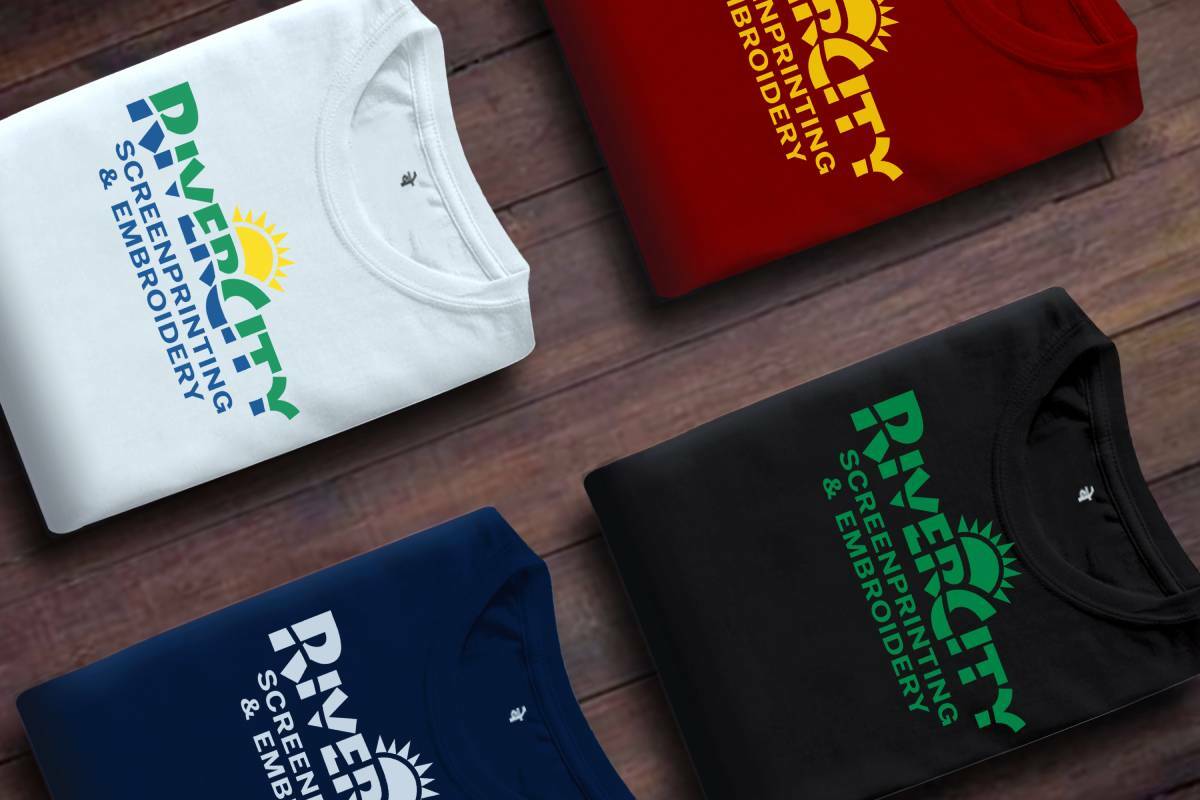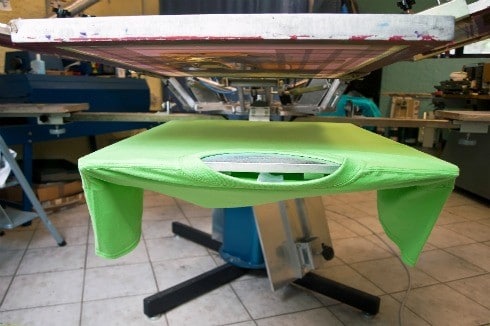The smart Trick of Tx Tees That Nobody is Talking About
The smart Trick of Tx Tees That Nobody is Talking About
Blog Article
The Greatest Guide To Tx Tees
Table of ContentsThe Ultimate Guide To Tx TeesThe Best Guide To Tx TeesUnknown Facts About Tx TeesThe 8-Second Trick For Tx TeesTx Tees for BeginnersThe Ultimate Guide To Tx TeesTop Guidelines Of Tx Tees
Add up various other expenses, like the number of utilities it takes to run the shop and the expense of ink and emulsion per layout. Take the print below.The emulsion must only be a few cents since you 'd only need to coat one display for this work. So how much should you charge per t shirt to make an earnings? Generally, printers attempt to make up to 45% earnings on a print job. Below's a table to help you identify that: overall price per item percent of preferred revenue as a decimal (instance:.25 or.45) earnings made per thing per job Now let's discuss the productivity of DTF.

With DTF, you can print a handful of shirts, or simply one. Both screen printing and DTF have their specific niches in the world.
10 Simple Techniques For Tx Tees
The ideal way to understand? Ask about and see what printing shop like yours are doing. custom cap printing. Attempt both out and see which you like better
When you're selecting what kind of printing approach to use for printing your artwork styles on your garments, it is very important that you understand the distinctions in between these two techniques so you can maximize outcomes while decreasing prices. Screen printing is the most typically made use of strategy for publishing layouts on textiles.
DTG printing is likewise called place or straight to garment printing since it publishes just what is required rather than making a display as display printers do. https://experiment.com/users/txtees02. Display printing functions by display filler squeegee screen printing ink display mesh screen, after that transferring the image to garment making use of warm and/or pressure
The DTG printer uses unique dye-sublimation inks that are applied right into a pre-designed image by an electronic printing system. The inks enter into the fabric, permitting for dynamic colors and outstanding detail. It's additionally understood as area or direct to garment printing due to the fact that it prints just what is needed rather than making a display as screen printers do.
More About Tx Tees
First, it's much quicker - you can publish a fullcolor photo in mins, instead of hours for screen printing. Second, there's no established time or costs involved - you can print any kind of design you like, without having to create a display first. Third, there's no waste - because display printers display print one layout at a time, they need to screen each shade individually.
The paper is really costly and can only be used when. Once it's printed on, it has to be thrown out. - The initial purchase cost is reduced than the upfront financial investment of DTG printers- You can publish multi-color styles one screen each time rather than needing to publish each color individually like DTG printing.

The Single Strategy To Use For Tx Tees
However, rather than making use of display mesh as screen printers do, dye sublimation printers make use of laser technology to move your pictures onto garments or paper. A heat procedure transfers the dye from its solid-state directly into the gas phase which in turn merges it onto textile substratums when they are rapidly heated up to heats under high stress.
Sublimation printing is environmentally friendly. It makes use of much less water than screenprinting, and because it does not involve making use of unsafe solvents, it's risk-free for all sorts of apparel. The dye sublimation inks are likewise unsmelling when healed, unlike display printers that make use of harmful chemicals during the screen printing process that leave behind an undesirable smell.
They also save money on pricey tools like exposure units given that color sublimation printers don't require a UV exposure unit or a flash cure stove that is typically used in screen printing (custom screen printing). What is straight to garment printing (DTG Printing)? DTG printing is an electronic screenprinting procedure that prints directly onto fabric using specialized inkjet printers
Tx Tees - Questions
DTG printing provides many advantages over standard screenprinting, including the capacity to print photo high quality images, better shade vibrancy, and the capability to publish styles on darker fabrics. DTG printers function by heating the fabric ink up until it becomes a gas. The gas then penetrates the fabric, bonding with the fibers to develop a permanent print.

Screen printers just prepare their screen then start printing up until they run out of product or ink.- There is a large range of skilled screen printers around the globe, which can be valuable for novices. - It's a slower process - screen printers frequently have to await the ink to dry before they can publish the following color- Screen printers require hands-on labor, so there's a higher learning contour and it takes longer to generate a premium style- Screen printing isn't as exact as DTG printing, so you might get some "blood loss" of shades from one part of the photo onto an additional if not done properly.
The Of Tx Tees
Instead of making use of screen mesh as display printers do, dye sublimation printers make use of laser technology to move your images onto garments or paper. A warm process transfers the color from its solid-state directly into the gas stage which in turn integrates it onto fabric substratums when they are swiftly heated to high temperatures under high pressure.
Sublimation printing is eco-friendly. It utilizes much less water than look at this site screenprinting, and because it doesn't entail making use of unsafe solvents, it's safe for all sorts of garments. The color sublimation inks are also odor-free when healed, unlike screen printers that utilize dangerous chemicals throughout the screen printing procedure that leave an undesirable odor.
They also save cash on pricey equipment like exposure systems given that color sublimation printers don't need a UV exposure system or a flash treatment stove that is generally utilized in display printing. What is straight to garment printing (DTG Printing)? DTG printing is an electronic screenprinting procedure that publishes straight onto textile using specialized inkjet printers.
An Unbiased View of Tx Tees
DTG printing offers many advantages over typical screenprinting, consisting of the capacity to publish photographic high quality images, greater shade vibrancy, and the capacity to publish styles on darker fabrics. DTG printers function by warming the textile ink up until it turns into a gas. The gas after that permeates the fabric, bonding with the fibers to develop an irreversible print.
Report this page